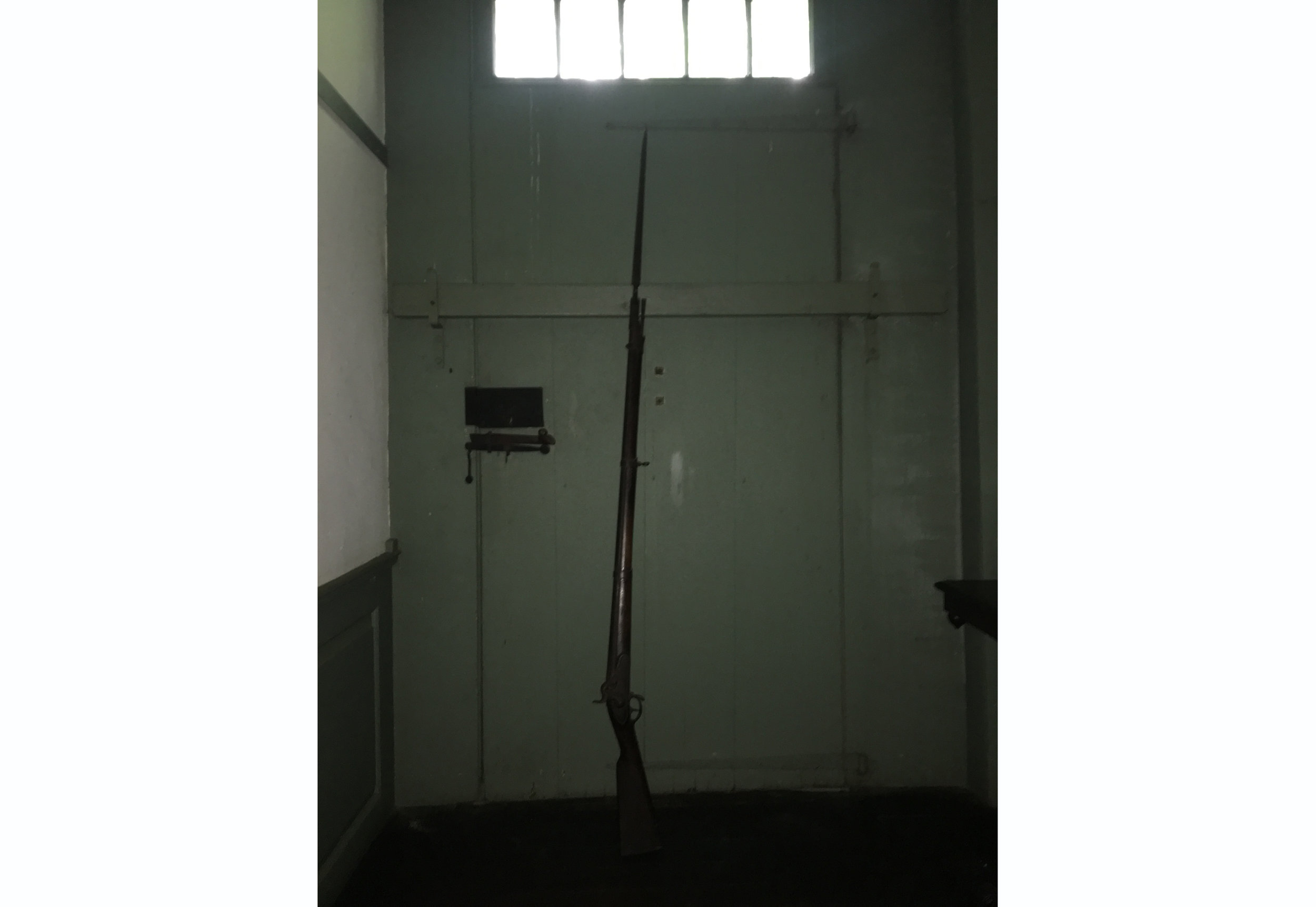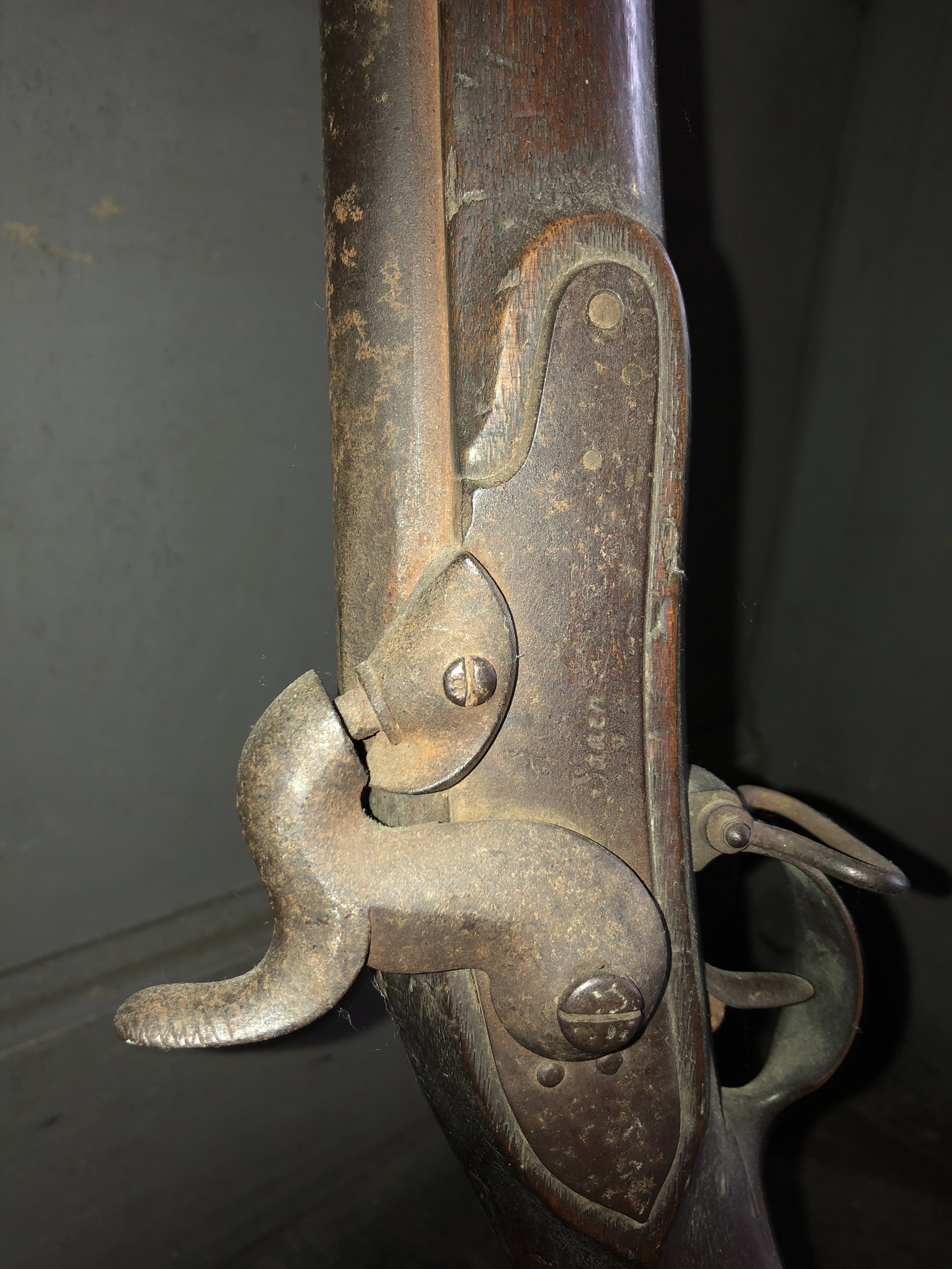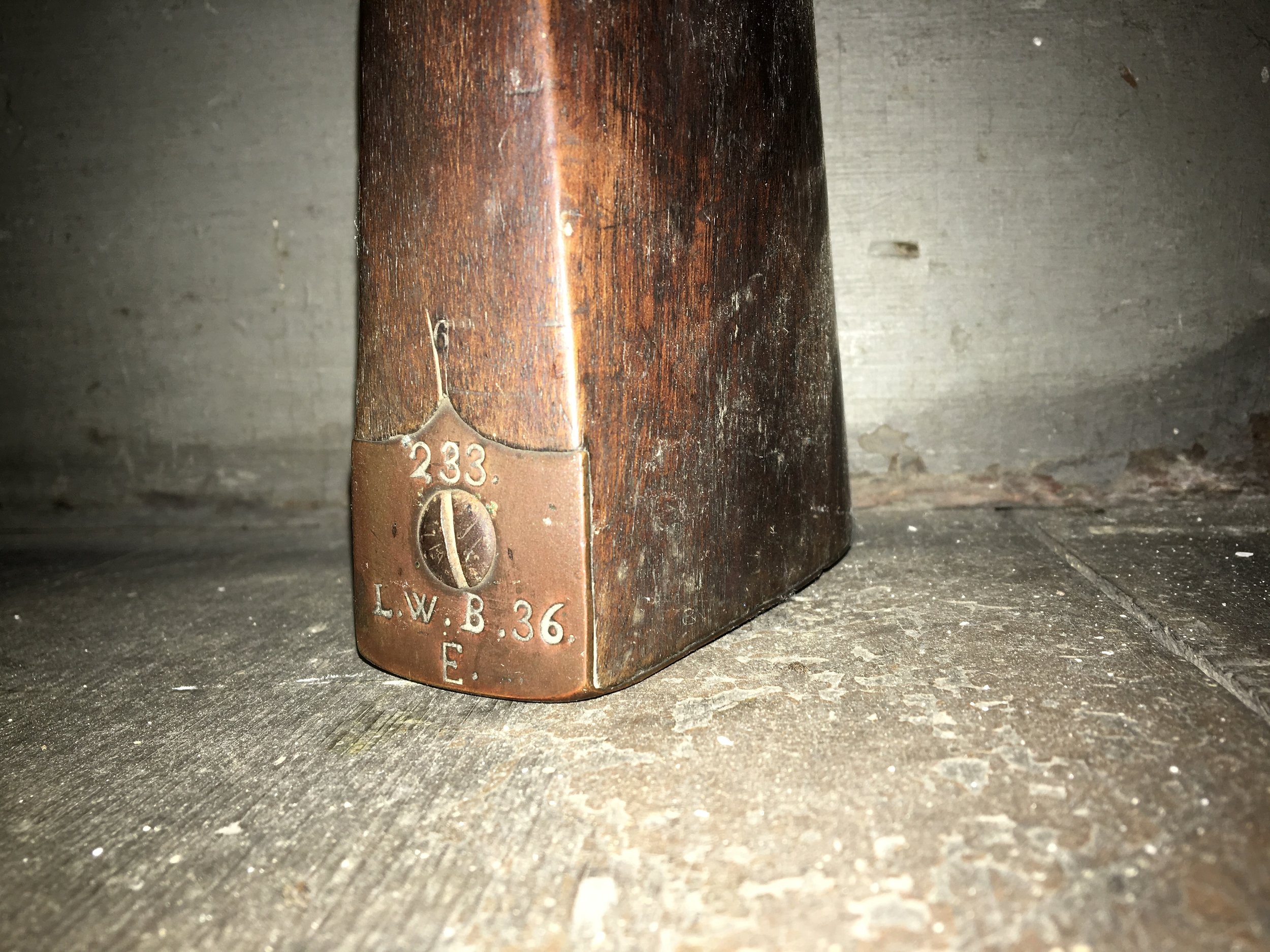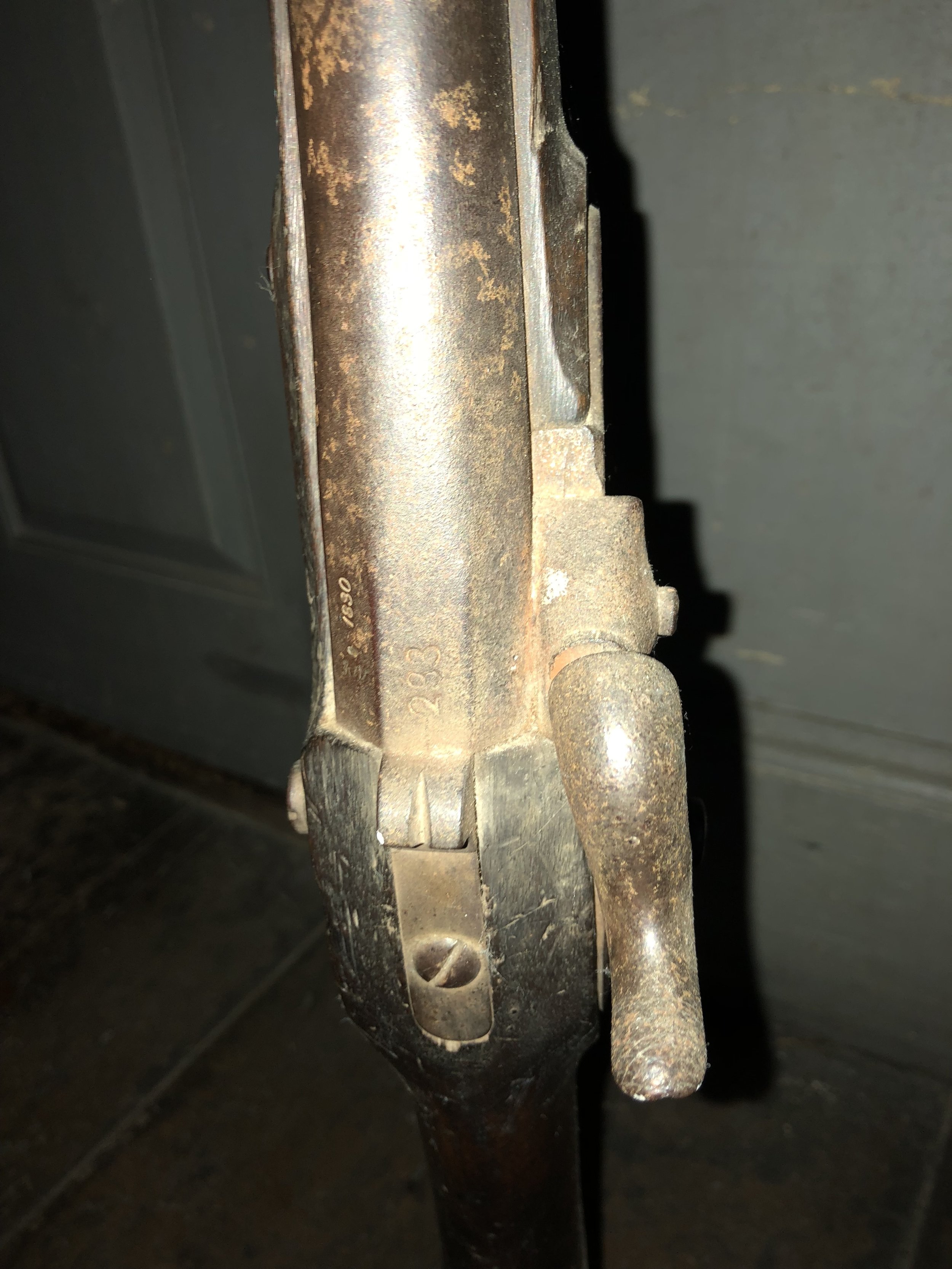1809 Prussian Potsdam Musket






In the 1799 kitchen, a 19th century musket stands by the door that leads to the back veranda. Made of walnut and brass, the musket measures 76 inches overall with a 41.25 inch barrel and a 15.25 inch triangular bayonet. A number of visitors have asked questions of when or where this musket was used, or whether it would have been brought back by a Civil War veteran in the Porter-Phelps-Huntington family. Because of these inquiries, I grew curious about its origins.
The inventory card for the musket (X025) indicates a date range from 1800 to 1850. Based on a quote from Frederic Dan Huntington (1819-1904) it also “dates from the War of 1812… was changed from a flintlock…[and] is a Hadley Militia musket.” There are also incised numbers and initials along it’s base. To interpret the numbers and to understand the history of this musket, I contacted Alexander MacKenzie, Curator of the Springfield Armory.
The serial numbers tell this musket’s story. MacKenzie identified it as a Potsdam Musket, from the 1809 Prussian infantry. Just above the musket’s trigger, “F/Saarn” is incised on a brass plate. There are also incisions on either side of the butt plate: “233/L.W.B. 36./E” on one side and “94398/1909/1830” on the other. 1830 is the year it was made in the Prussian Royal Arms Factory in Saarn, Rhineland [1]. 233 would have been the tracking or rack number [2] and L.W.B stands for the Landwehr Regiment, where it was used.
As indicated on the inventory card, it was originally a flintlock [3]. MacKenzie described that it was most likely converted to percussion ignition around 1840. Many of the older models, like the Potsdam musket, were not in use in Europe by the 1860’s and would have been sold to countries that were in desperate need of arms. The Union Army during the Civil War bought nearly 126,000 of these muskets in the first few years of the war and, according to MacKenzie, to keep them out of the hands of the Confederate Army.
It is possible that this musket was used in the early Civil War and brought back to the house by a family veteran. The Union Army, by this time, however, was replacing these models by more modern fire arms from Springfield and Connecticut. After 1861, Potsdam muskets were sold as surplus military relics in North America. It is possible that this musket would have been purchased as a surplus item with the bayonet.
While the musket still stands guard at the very back of the house, its complete provenance remains a conundrum.
__________
Sources
Pam, David, (1998). The Royal Small Arms Factory Enfield & Its Workers. Enfield: Published by the author. ISBN 0-9532271-0-3.
Alexander MacKenzie, Curator, The Springfield Armory. https://www.arcadiapublishing.com/Products/9781467122740
"Prussian Model 1809 “’Potsdam’ Musket”. Horse Soldier. Accessed June 18, 2018. http://www.horsesoldier.com/products/firearms/longarms/9824.
Footnotes
[1] "Pattern 1809 Prussian Musket - The Battle of Waterloo." Royal Armouries Collections. Accessed July 01, 2018. https://collections.royalarmouries.org/battle-of-waterloo/arms-and-armour/type/rac-narrative-272.html.
[2] A racking number was a quick way for the armorer to check for organizational purposes. Weapons had identification numbers to match a number placed in its corresponding location.
[3] Flintlock and Percussion Ignition: The flintlock ignition creates a spark made by the contact of flint and steel, called a frizzen. When the trigger was pulled, the flint would strike the steel creating a spark igniting the powder. Percussion ignition caps were “a system for utilizing fulminating salts to fire powder, and further specified as one of the chief advantages of his system that it prevented any escape of gas through the touch-hole”.
. http://americansocietyofarmscollectors.org/wp-content/uploads/2013/03/B019_Bedford.pdf., http://sportsmansvintagepress.com/read-free/book-pistol-revolver-table-contents/caplock-pistols-the-percussion-system/.